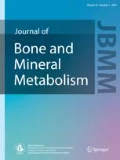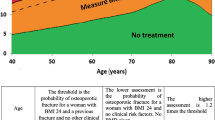Abstract:
Osteoporosis is an established and well-defined "disease" that affects more than 75 million people in the United States, Europe, and Japan. It is a major health problem resulting in progressive health deterioration, morbidity, and escalating annual health care costs. A panel of specialists met in Nara, Japan, to review current knowledge in certain areas of osteoporosis and to document it in a form that may be helpful to practitioners. The focus was on providing general information, rather than specific advice. This statement is based on the combined experience of the members of the panel, on the papers and posters presented at the Second International Conference on Osteoporosis in Osaka November 13–16, 1997, and, in particular, on the presentations by invited experts at the Consensus Development Conference that followed in Nara. A draft of the statement was prepared before the meeting, based on contributions by the panel. After the meeting, the statement was rewritten by Drs. Morii and Genant to incorporate the conclusions of the panel, and it was then reviewed by the panel. The pathophysiology of osteoporosis is multifactorial; there is no single cause but there are many risk factors. Bone mineral density is one component of fracture risk that can be measured with reasonable accuracy and precision. It generally forms the basis for the diagnosis of osteoporosis. The accuracy of bone mineral density (BMD) measurements in predicting fracture is as good as blood pressure in predicting stroke. The main risk factors are calcium and protein deficiency, low levels of estrogen or androgen, low body mass, lack of weight-bearing exercise, immobilization, and the use of corticosteroid hormones, thyroid hormones, parathyroid hormones, alcohol, tobacco, diuretics, or anticoagulants. The risk of fracture in patients with osteoporosis can be greatly reduced with a variety of approved treatments of established safety and efficacy that prevent bone loss and that may produce some rise in BMD, although the long-term bone gain remains uncertain. The major disability produced by hip or vertebral fracture makes prevention the first priority.
Similar content being viewed by others
Author information
Authors and Affiliations
Additional information
Received: June 18, 1998 / Accepted: July 10, 1998
About this article
Cite this article
Morii, H., Genant, H. Statement on the diagnosis and management of osteoporosis from the Consensus Development Conference at the Second International Conference on Osteoporosis, Osaka 1997. J Bone Miner Metab 16, 206–214 (1998). https://doi.org/10.1007/s007740050047
Issue Date:
DOI: https://doi.org/10.1007/s007740050047




